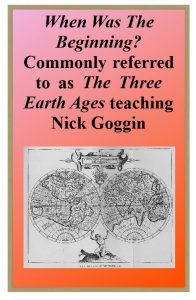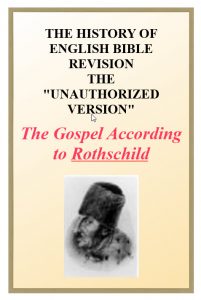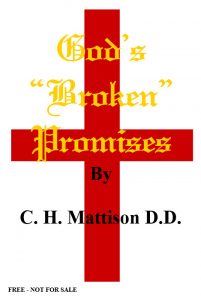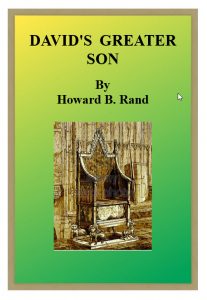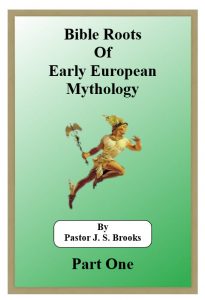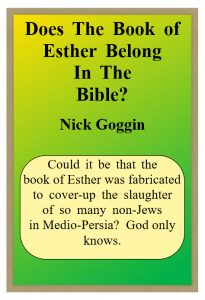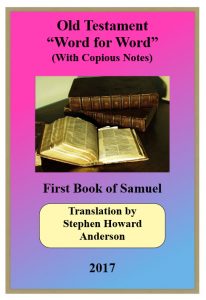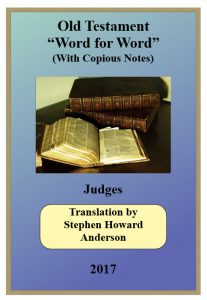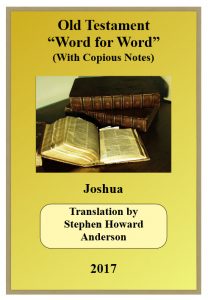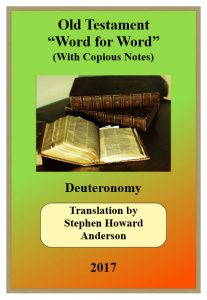
Sepher Elleh Debariym
(Book of Deuteronomy)
I HAVE BEGUN THIS COMPUTERISED VERSION IN NOVEMBER 2016. There were some text errors in the earlier versions, due to lack of sufficient research material when I first typed it. I have stated that this will be an ongoing work, and whenever new knowledge is available, and would make changes necessary, they would be made. Nothing is more important than accuracy when dealing with Scripture.
“Deuteronomy” is translated as “Second Law” in the Septuagint, but the actual name of the book is “These Are The Words” – Elleh 428 Debariym 1697 plural. The book begins with these words, and thus the Hebrew title for the book. This is not a “second law”, but a repetition of what Mosheh had said to Yisrael previously. An entirely new generation had arisen in Yisrael, and the old one had perished in the wilderness. The new folks needed to hear these words, and Mosheh wrote them down, and the scroll was placed in the Ark of the Covenant.
As in the other four books of Mosheh, proper names will be in the transliteration format, as they are spelled in Hebrew. If you want the KJV spelling, refer to your KJV. I will not indicate Masoretic vowel points, as they are often in error, and varied from scribe to scribe as to spelling. They were for help in pronunciation, but the scribes changed much of the text to hide the Holy Name of Yahweh. They substituted #136 adonay for The Name, because of Jewish “tradition”. I have indicated where this has occurred in the margin notes, and have replaced the Name of Yahweh where it belongs.
Chapter notes are mine, and you may agree or disagree as you please. I am Yisrael Identity in belief, and Scripture firmly supports this. If you think you have found error, look it up for yourself. My research material is as follows –
Complete Word Study Old Testament, and the Dictionary for it (AMG Publishers) Brown, Driver, Briggs, Gesenius Hebrew/English Lexicon (Hendrickson Publishers)
Strong’s Exhaustive Concordance (Nelson Publishers)
A Tanak for the Hebrew (J.P.S.). The JPS Tanak is the most accurate I could find as to the Hebrew, but anything published by Jews needs careful examination. Their “English translation” is an absolute fraud. It does not even approach saying what the Hebrew says, so don’t even bother with it.
Words that are underlined are one word in the Hebrew, even though several words are used in English. Strong’s numbers will follow words where needed in italics, but I will only do this a few times, and then only the word will be used.
This work is Copyrighted © by Stephen Howard Anderson, and may not be commercially reproduced without written permission from the translator. If quoted in a publication, credit must be given to the translator for the quoted material, and no alterations may be made to the material being quoted.
Stephen Howard Anderson, Translator
